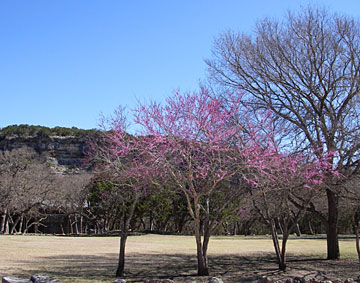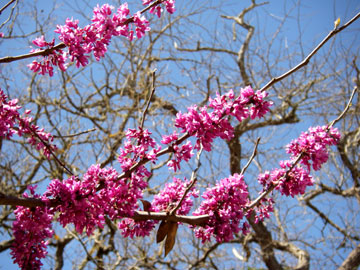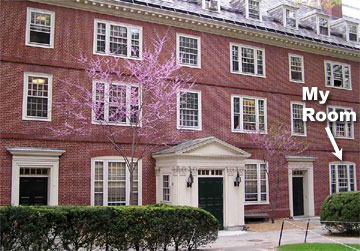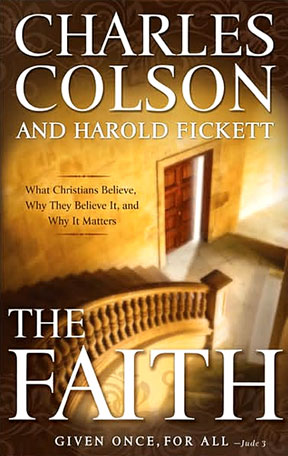I love spring. There’s something about the reawakening of nature that sparks a reawakening in my own soul.
When I lived in New England during my college and grad school days, I loved watching for the first signs of spring. Somewhere along in March the tiniest buds would being to appear on the trees. But the earliest true celebration of spring came with the blooming of the crocuses.
Since leaving the Boston area in 1983, I lived for twenty-four years in Southern California, where spring is hardly a season. It’s hard to complain when one lives in a place where winter is pretty much non-existent, where flowers bloom year round, and where the temperatures are mostly suitable for short-sleeved shirts. But I did miss the change of seasons, especially the radiance of fall and the turning of winter into spring.
 I now live in the Hill Country of Texas, where we have seasons. Oh, to be sure our winters aren’t like those in the northern part of the country, though we do get below freezing during a couple dozen nights each year. And our summers can be a bit on the long side. But, even so, there are distinct seasons in this part of the world, and I’m glad to be experiencing them again. (Photo: A redbed blooming at Laity Lodge)
I now live in the Hill Country of Texas, where we have seasons. Oh, to be sure our winters aren’t like those in the northern part of the country, though we do get below freezing during a couple dozen nights each year. And our summers can be a bit on the long side. But, even so, there are distinct seasons in this part of the world, and I’m glad to be experiencing them again. (Photo: A redbed blooming at Laity Lodge)
The Hill Country is filled with evergreen flora, including live oaks and “cedars.” (They’re really ash junipers, though you rarely hear the correct name.) But we have many trees and bushes that lose their leaves in the winter, producing a dusty brown countryside. The starkness of winter scenery has a certain beauty all its own. But it also prepares our eyes to delight in the coming of spring.
 One of the first signs of the Hill Country spring emerged from winter sleep last week. The red bud trees began to bloom! While most of the deciduous trees are still slumbering, the red buds sprung forth with their striking purplish-pink flowers. My son insists they should be called “purple buds,” because they’re just not red. (Photo: A closeup of redbud blooms at Laity Lodge. As you can see, the oak in the background hasn’t even begun to bud.)
One of the first signs of the Hill Country spring emerged from winter sleep last week. The red bud trees began to bloom! While most of the deciduous trees are still slumbering, the red buds sprung forth with their striking purplish-pink flowers. My son insists they should be called “purple buds,” because they’re just not red. (Photo: A closeup of redbud blooms at Laity Lodge. As you can see, the oak in the background hasn’t even begun to bud.)
A bit of botany: There are several different varieties of redbud trees in the United States. They are in the genus Cercis L., which is a member of pea family. (The “L,” by the way, stands for Linnaeus. Carolus Linnaeus was an 18th-century Swedish botanist who devised the taxonomic ordering of plants that we use today. Ironically, during my college years I lived on Linnean Street in Cambridge, Massachusetts, named after Carolus Linnaeus.) Within the United States we the California redbud (Cercis orbiculata Greene) and the eastern redbud (Cercis Canadensis L.) which has three varieties, all of which grow in Texas: the eastern redbud (Cercis canadensis L. var. canadensis)the Mexican redbud (Cercis canadensis L. var. mexicana) and the Texas redbud (Cercis canadensis L. var. texensis). I’m pretty sure the redbuds I’m seeing in the Hill Country are of the Texas variety.
Sometimes the redbud is called the Judas tree. This Mediterranean species of the redbud (Cercis siliquastrum L.), which does not grow in the United States, was traditionally believed to be the kind of tree from which Judas Iscariot hanged himself.
As I was doing a bit of online research about the redbud tree, I thought I’d find out more about the eastern redbud. Perhaps I had seen these when I lived in New England, but had paid close attention. So I Googled on “redbud trees,” looking in “Images” and selecting only “Extra Large images.” To my surprise, the second picture that showed up was of my freshman dorm at Harvard, Straus Hall, with my common room window in full view! Clicking on the thumbnail, I was taken to a website devoted to Harvard Yard Trees. Scrolling down, I found the photo with the caption: “Two redbud trees bloom in front of Straus Hall.”
 Were those trees there in 1976, when I experienced my first New England spring? Did I enjoy them at the time, but have long since forgotten? Or were they planted sometime since I left Straus Hall? My guess is that these trees were not there when I lived in Straus Hall. You’ll notice from the photo that the trees are fairly small, indicating that they are younger than 32 years. Moreover, in the last decade or so Harvard has done a major replanting of trees in Harvard Yard. I’m thinking that the trees outside of my dorm were probaby dogwoods, not redbuds, but I’m not sure. (Photo: Two redbud trees bloom in front of Straus Hall at Harvard. Did I live just a few feet away from a redbud? Note: Straus Hall was built in honor of Isidor and Ida Straus, who died on the Titanic.)
Were those trees there in 1976, when I experienced my first New England spring? Did I enjoy them at the time, but have long since forgotten? Or were they planted sometime since I left Straus Hall? My guess is that these trees were not there when I lived in Straus Hall. You’ll notice from the photo that the trees are fairly small, indicating that they are younger than 32 years. Moreover, in the last decade or so Harvard has done a major replanting of trees in Harvard Yard. I’m thinking that the trees outside of my dorm were probaby dogwoods, not redbuds, but I’m not sure. (Photo: Two redbud trees bloom in front of Straus Hall at Harvard. Did I live just a few feet away from a redbud? Note: Straus Hall was built in honor of Isidor and Ida Straus, who died on the Titanic.)
At any rate, I enjoyed the irony of Google taking me back to my freshman year in New England, where I first experienced a real spring. Now, 32 years later, I’m even more thrilled by the signs of nature awakening. There’s nothing quite like it.
More from Beliefnet and our partners

